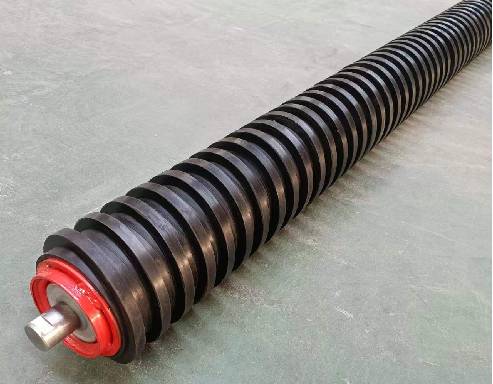 Afrikaans
Afrikaans  Albanian
Albanian  Amharic
Amharic  Arabic
Arabic  Armenian
Armenian  Azerbaijani
Azerbaijani  Basque
Basque  Belarusian
Belarusian  Bengali
Bengali  Bosnian
Bosnian  Bulgarian
Bulgarian  Catalan
Catalan  Cebuano
Cebuano  Corsican
Corsican  Croatian
Croatian  Czech
Czech  Danish
Danish  Dutch
Dutch  English
English  Esperanto
Esperanto  Estonian
Estonian  Finnish
Finnish  French
French  Frisian
Frisian  Galician
Galician  Georgian
Georgian  German
German  Greek
Greek  Gujarati
Gujarati  Haitian Creole
Haitian Creole  hausa
hausa  hawaiian
hawaiian  Hebrew
Hebrew  Hindi
Hindi  Miao
Miao  Hungarian
Hungarian  Icelandic
Icelandic  igbo
igbo  Indonesian
Indonesian  irish
irish  Italian
Italian  Japanese
Japanese  Javanese
Javanese  Kannada
Kannada  kazakh
kazakh  Khmer
Khmer  Rwandese
Rwandese  Korean
Korean  Kurdish
Kurdish  Kyrgyz
Kyrgyz  Lao
Lao  Latin
Latin  Latvian
Latvian  Lithuanian
Lithuanian  Luxembourgish
Luxembourgish  Macedonian
Macedonian  Malgashi
Malgashi  Malay
Malay  Malayalam
Malayalam  Maltese
Maltese  Maori
Maori  Marathi
Marathi  Mongolian
Mongolian  Myanmar
Myanmar  Nepali
Nepali  Norwegian
Norwegian  Norwegian
Norwegian  Occitan
Occitan  Pashto
Pashto  Persian
Persian  Polish
Polish  Portuguese
Portuguese  Punjabi
Punjabi  Romanian
Romanian  Russian
Russian  Samoan
Samoan  Scottish Gaelic
Scottish Gaelic  Serbian
Serbian  Sesotho
Sesotho  Shona
Shona  Sindhi
Sindhi  Sinhala
Sinhala  Slovak
Slovak  Slovenian
Slovenian  Somali
Somali  Spanish
Spanish  Sundanese
Sundanese  Swahili
Swahili  Swedish
Swedish  Tagalog
Tagalog  Tajik
Tajik  Tamil
Tamil  Tatar
Tatar  Telugu
Telugu  Thai
Thai  Turkish
Turkish  Turkmen
Turkmen  Ukrainian
Ukrainian  Urdu
Urdu  Uighur
Uighur  Uzbek
Uzbek  Vietnamese
Vietnamese  Welsh
Welsh  Bantu
Bantu  Yiddish
Yiddish  Yoruba
Yoruba  Zulu
Zulu conveyor belt drive pulley
Understanding Conveyor Belt Drive Pulleys
Conveyor belts are vital components in various industries for transporting materials efficiently. One essential part of a conveyor belt system is the drive pulley, which plays a crucial role in the functionality and reliability of the entire system. This article aims to explore the significance, types, and maintenance of conveyor belt drive pulleys.
What is a Drive Pulley?
A drive pulley, often referred to as the head pulley, is the component of a conveyor system that provides the driving force for the belt. It is typically located at the discharge end of the conveyor, where the material is unloaded. The drive pulley is connected to a motor that rotates it, causing the conveyor belt to move in a continuous loop. This mechanism allows for the efficient transportation of bulk materials, products, or packages across various distances.
Types of Drive Pulleys
Drive pulleys come in several types, each designed for specific applications. The most common types include
1. Lagged Drive Pulleys These are equipped with a surface cover that enhances grip and reduces slippage between the pulley and the belt. Lagging can be made from rubber or other materials, ensuring better traction, especially when handling heavy loads.
2. Crowned Drive Pulleys A crowned pulley has a slightly raised center that encourages the belt to center itself as it operates. This design helps maintain proper alignment and prevents the belt from drifting off the sides during operation.
3. Flat Drive Pulleys These pulleys are more straightforward in design and are used in applications where slippage is not an issue. They are often found in lighter-duty conveyors.
4. Tapered Drive Pulleys Tapered pulleys are designed to help in reducing the load on the bearings while also facilitating easier installation and maintenance.
Importance of the Drive Pulley
The drive pulley is crucial for several reasons
conveyor belt drive pulley

- Efficiency A well-designed drive pulley can greatly enhance the efficiency of a conveyor system by ensuring a consistent and reliable motion of the belt.
- Durability Drive pulleys are typically made from robust materials that can withstand heavy loads and harsh conditions, making them a durable option for long-term use.
- Reduced Wear An effective drive pulley helps minimize wear and tear on the conveyor belt, ultimately extending the lifespan of both the belt and the pulley itself.
- Safety By maintaining a steady and reliable motion, drive pulleys contribute to the overall safety of the conveyor system. Properly functioning pulleys help prevent accidents caused by belt slippage or misalignment.
Maintenance of Drive Pulleys
Regular maintenance is essential for ensuring the longevity and performance of drive pulleys. Some key maintenance practices include
- Regular Inspections Routine checks can identify any signs of wear, damage, or misalignment. Early detection allows for timely repairs, which can prevent further complications.
- Cleaning Keeping the pulleys clean from debris and material buildup is vital. Dust and residue can affect the grip between the pulley and the belt, increasing the likelihood of slippage.
- Alignment Adjustments Ensuring that the drive pulley is correctly aligned with the conveyor system is crucial for smooth operation. Misalignment can lead to uneven wear on the belt.
- Lubrication Proper lubrication of the pulley bearings is necessary to reduce friction and wear, enabling smooth rotation and decreasing the risk of overheating.
Conclusion
Drive pulleys are integral components of conveyor belt systems, designed to provide the necessary force to transport materials. Understanding their types, importance, and maintenance requirements can significantly enhance the efficiency and longevity of conveyor operations. By ensuring proper care and attention to these components, industries can maintain smooth and reliable material handling processes, ultimately leading to greater productivity and reduced operational costs.
-
Revolutionizing Conveyor Reliability with Advanced Rubber Lagging PulleysNewsJul.22,2025
-
Powering Precision and Durability with Expert Manufacturers of Conveyor ComponentsNewsJul.22,2025
-
Optimizing Conveyor Systems with Advanced Conveyor AccessoriesNewsJul.22,2025
-
Maximize Conveyor Efficiency with Quality Conveyor Idler PulleysNewsJul.22,2025
-
Future-Proof Your Conveyor System with High-Performance Polyurethane RollerNewsJul.22,2025
-
Driving Efficiency Forward with Quality Idlers and RollersNewsJul.22,2025





























